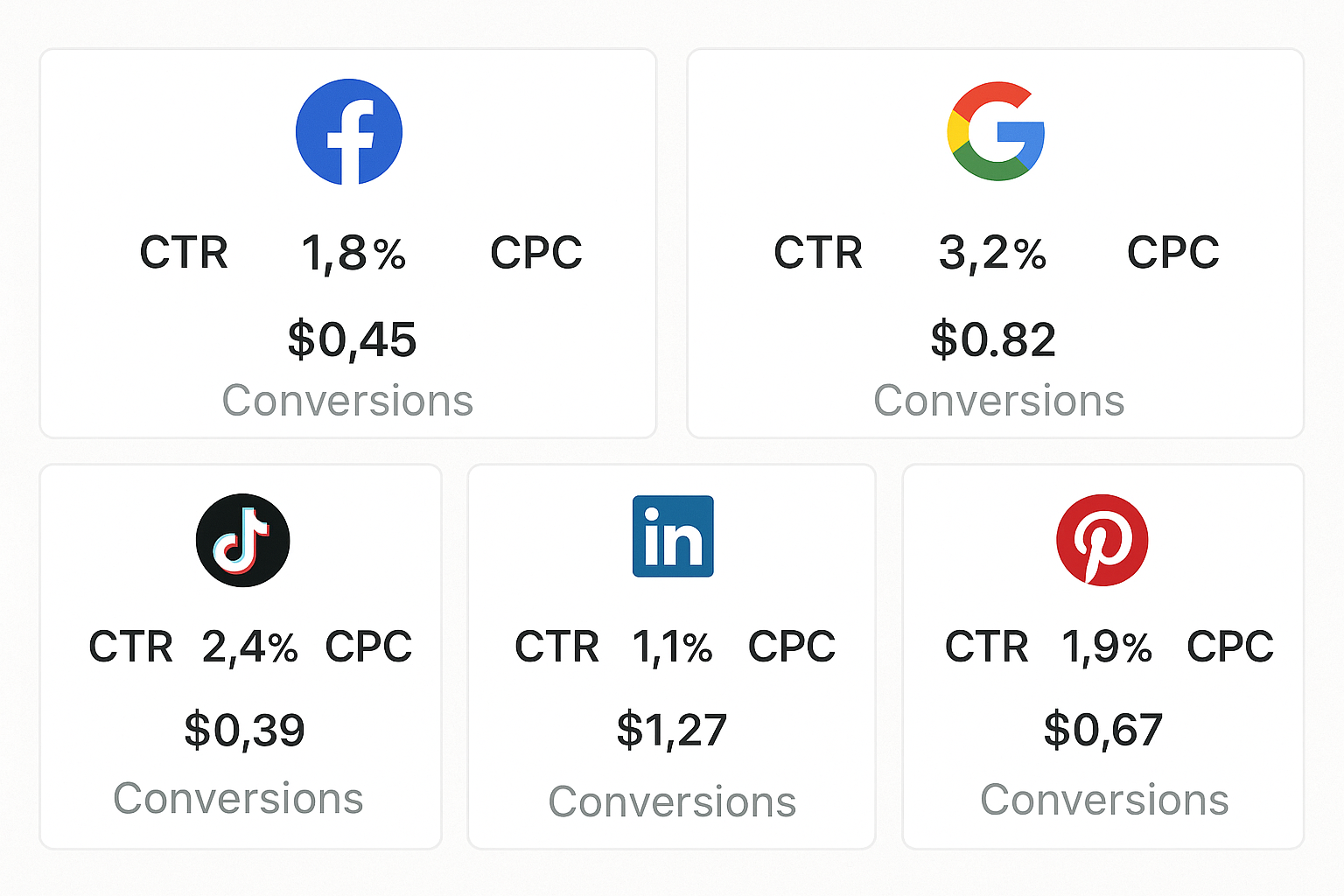With so many paid traffic platforms available today, choosing the right one can feel overwhelming. Should you start with Facebook Ads, Google Ads, TikTok, or something else? The truth is, the “best” platform depends on your business goals, budget, audience, and offer. In this guide, we’ll break down the most popular paid traffic platforms and help you decide which is the right fit for your business.
Start with Your Business Objective
The first step is defining what you want to achieve.
- Want immediate conversions? Choose platforms with strong direct-response tools.
- Looking to build brand awareness? Focus on reach and video platforms.
- Need to drive local traffic? Use search and map-based ads.
Your goal will dictate which platform is best.
1. Meta Ads (Facebook & Instagram)
Best for: Visual brands, retargeting, lead generation, e-commerce
Strengths:
- Highly detailed audience targeting
- Multiple ad formats (image, video, carousel, stories, reels)
- Great for storytelling and brand building
- Ideal for retargeting warm audiences
Weaknesses: - Performance depends heavily on creative
- Learning curve for campaign setup
- Costs rising due to competition
Use if: You have a visual product, strong creatives, and want to build or scale full-funnel campaigns.
2. Google Ads
Best for: Search intent traffic, service businesses, high-ticket offers
Strengths:
- Capture users actively searching for a solution
- Great for local businesses (Google Maps, call ads)
- High conversion potential
Weaknesses: - Requires keyword research and optimization
- Clicks can be expensive in competitive industries
- No visuals unless using Display or YouTube
Use if: Your audience is already searching for what you offer and you want high-intent traffic.
3. YouTube Ads
Best for: Education, entertainment, expert positioning, long-form content
Strengths:
- Huge reach and time-on-platform
- Strong for building authority and trust
- Great retargeting opportunities
Weaknesses: - Requires strong video production
- Higher learning curve for scripting and delivery
- Slower to convert than direct response platforms
Use if: You can create engaging videos and want to nurture cold traffic over time.
4. TikTok Ads
Best for: Trend-based brands, Gen Z targeting, viral products
Strengths:
- Cheap impressions and fast reach
- Organic-feeling ad formats
- Powerful algorithm
Weaknesses: - Requires native, short-form creative
- Less suited for high-ticket or B2B offers
- Can burn out quickly without fresh content
Use if: You’re targeting a younger audience and have a highly visual or impulsive offer.
5. LinkedIn Ads
Best for: B2B services, recruiting, professional audiences
Strengths:
- Accurate job title and industry targeting
- Great for lead gen in professional markets
Weaknesses: - Very high CPCs
- Slower conversion cycles
- Limited creative formats compared to Meta
Use if: You sell to businesses or professionals and have a high-ticket or relationship-based offer.
6. Pinterest Ads
Best for: DIY, lifestyle, design, weddings, food, and home improvement
Strengths:
- Visual discovery platform
- Long content lifespan
- Excellent for evergreen content
Weaknesses: - Smaller ad ecosystem
- Best suited for top-of-funnel content
- Less control over detailed targeting
Use if: You have a highly visual offer that fits into Pinterest’s discovery model.
Budget Considerations by Platform
- Meta & TikTok: Good for small budgets, especially for testing
- Google & LinkedIn: Better for larger budgets or higher-ticket items
- YouTube: Needs more production investment but scalable
- Pinterest: Affordable but slower ROI
Combining Platforms
Many businesses combine platforms for a full-funnel experience:
- Use Google Ads for search traffic
- Use Meta Ads to retarget and nurture
- Use YouTube for brand building
- Use LinkedIn for B2B lead gen
Each platform has a role depending on where the user is in the buying journey.
Final Thoughts: Match Platform to Strategy
The best platform for your business is the one that matches your goal, your audience, and your ability to create content. Start with one or two that align with your strengths and test carefully. Once you find what works, scale with confidence and consistency. Paid traffic only works when the platform, offer, and audience are all aligned.

